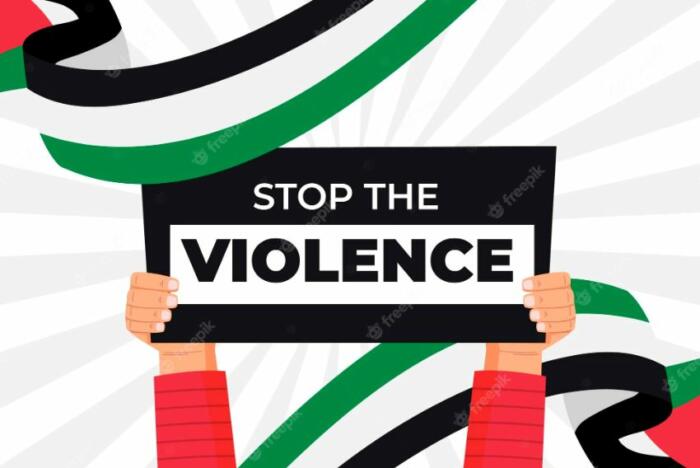Email us if you want to showcase your mind-boggling Articles.

Violence In A Workplace, How to Deescalate The Conflict
Resolving Violence In A Workplace can be challenging. It often feels easier to lash out at someone you feel has wronged you, rather than deal with the situation honestly and calmly. De-escalating conflict is a process that involves identifying the underlying cause of an argument, focusing on solutions instead of blame, and re-engaging with your team in a friendly manner.
To succeed, it’s important to understand what de-escalation of any Violence In A Workplace looks like from different perspectives: the person involved in the conflict, their supporters, and their opponents. Understanding these different perspectives is essential for anyone who wants to de-escalate conflict at work. This article covers everything you need to know about de-escalating Violence In A workplace from a macro level (how do we tackle this issue as a society? What are some ways we can help?) to micro levels (what actions can you take on a specific level?).
This position statement categorizes workplace violence into three categories. Types II and III are the most frequent in the healthcare industry.
Talking about Violence In A Workplace, Workplace violence in type I is “non-criminal in nature and has no association with the company or its employees.” In type II, “customers, clients, or patients” become violent “when receiving services” (NIOSH, 2006, 2013). The three types of workplace violence are characterized by “an association between the business and the perpetrator,” “employees attacking or intimidating other employees,” and “employees who have personal relationships with their victims” (Iowa Prevention Research Center, 2001; NIOSH, 2006, 2013). Let’s read more about Violence In A Workplace.
Despite OSHA’s voluntary workplace violence prevention program, at the moment, no employers must implement them, but OSHA may penalize employers that fail to provide a safe workplace free from recognized dangers. Currently, the majority of states have drafted legislation to punish assaults against first responders, while a few states have legislated workplace violence prevention programs. In general, the law applies to both public and private healthcare facilities, although there are a few states where it applies exclusively to the latter. States which require employer-led violence prevention programs include California, Connecticut, Illinois, Maryland, Minnesota, New Jersey, Oregon, and Washington.
Let’s take a look at some ways that you can de-escalate Violence In A Workplace.
From a macro level, how can we de-escalate conflict?
Talking about violence in a workplace at a macro level, we need to start with understanding the causes of conflict. Looking at the root causes of conflict can help you and your team identify areas where you may be encountering issues within your organization and learn how to address them. When re-engaging in conflict, it’s important to have a clear understanding of your goals and the other person’s goals.
If there is Violence In A Workplace, how to deescalate them? For example, let’s say that your team’s main issue is that people have different expectations of work. One person expects to do a lot of design work, while others expect to simply write code. While this can be a great opportunity for discussion and learning, it causes a lot of conflict within the team. If you and your team’s stakeholders sit down and talk about expectations, you can address the underlying issues that are causing conflict. You can also address the situation with your team’s stakeholders, who may not fully understand how expectations are different between roles and teams.

From a micro level, what actions can you take to de-escalate conflict?
When re-engaging in conflict at a micro level, there are two main things you can do:
Shut down the conversation
– If someone is arguing with you and they are not listening, or they are repeating falsehoods, it may be a good idea to end the conversation. If the conflict escalates and someone gets physical, you won’t be able to reason with them when they are in a fit of rage. It’s best to end the conversation as soon as possible, rather than letting it escalate and get physical.
– If someone is arguing with you and they are not listening, or they are repeating falsehoods, it may be a good idea to end the conversation. If the conflict escalates and someone gets physical, you won’t be able to reason with them when they are in a fit of rage. It’s best to end the conversation as soon as possible, rather than letting it escalate and get physical.
Change the subject
– If you are discussing an issue that is causing conflict, but it’s not the subject of the argument, try changing the subject. This can be a quick way to put a stop to an argument.
– If you are discussing an issue that is causing conflict, but it’s not the subject of the argument, try changing the subject. This can be a quick way to put a stop to an argument.
Ask for help
– If you feel like you need help re-engaging with someone, you can use an “I need help” tone. Asking for help signals that you are not capable of dealing with the situation yourself. You may want to take a break, talk to your manager, or schedule a meeting if you feel like you need support.
Ask for help when you need it most
If you find yourself in a situation where you don’t know how to re-engage with someone or you feel like you may need some help, you can simply ask someone to help you. When you ask for help, you are acknowledging that you may not have the skills to solve the problem yourself and that you need some support. Keep in mind that these situations are not just limited to people who may have experienced trauma or are suffering from a mental health issue. You may find yourself needing help from a supervisor, coworker, or team member with whom you have a conflict. If you are in a situation where you need help, you can simply say, “I’m not sure how to re-engage with ___. Can you help me figure this out?”

Focus on solutions, not blame
When you are in a conflict situation, it’s easy to focus on who is at fault. This, however, is not productive. Focusing on blame only creates more conflict between you and the person you are arguing with. It’s best to focus on solutions rather than blame. This way, you can resolve the conflict while keeping the peace. How can you focus on solutions instead of blame? Asking open-ended questions, such as, “What do you want to happen?” or “What outcome are you hoping to get?”, can help you and your team move towards a solution. It may also help to write down any solutions that you come up with and post them somewhere you can see them throughout the day to remind yourself of your goals.
Make your point and move on
If you and your team have resolved the issue and everyone is fine, don’t stay in the room arguing about the past. It’s not worth rehashing an argument that has been resolved. Simply make your point and move on. If you have written down your solution, post your note somewhere where you can see it throughout the day. This way, you will be reminded of your resolution and you can keep your resolution in mind throughout the day. Resolving conflict should be a part of everyone’s routine, as it can help you focus on the work that needs to get done and prevent unhealthy situations from happening.
Hold meetings regularly to communicate
Holding regular team meetings can be a great way to practice de-escalation and practice communicating in a positive manner. These meetings can also help you and your team identify ways that communication could be improved. Team meetings can also be a great place to practice de-escalation techniques. Before a meeting, try to think of ways you can practice de-escalation before you get into a heated argument with someone. Doing this can help you and your team avoid heated arguments and practice de-escalation skills before they happen.
Conclusion
Conflict can be challenging, but it doesn’t have to be destructive. De-escalating conflict is a process that involves identifying the underlying cause of an argument, focusing on solutions instead of blame, and re-engaging with your team in a friendly manner. Knowing how to de-escalate conflict can help you and your team resolve issues more peacefully and save the time and energy that would be wasted on an argument. When you know how to de-escalate conflict, you will be able to focus your energy on solving problems and developing your team.
If you’ve ever been in a heated debate with your coworkers and felt threatened by the other person, then you know what it’s like to be in a tense work environment. It is easy for two people who are fighting about something to feel threatened, which is why de-escalation techniques can be so helpful. You need to have open communication with your coworkers if you want to resolve the issue with them rather than causing unnecessary conflict.



